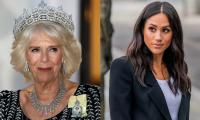Amid allegations of foul play and as widely predicted, the PTI has emerged as the single largest party nationwide and currently stands ahead of the PML-N and the PPP. Even though the party fell short of winning a simple majority, the PTI is, with the help of independents and smaller parties, poised to form its government.
Fate has finally been gracious to the architect of ‘Naya Pakistan’. The office of the prime minister has always tickled his fancy and whetted his appetite. The electoral outcome marks a reversal of fortune for the PML-N. As compared with its performance 2013, the party has lost about 50 percent of its seats while the PTI’s tally has gone up by more than 300 percent. The PPP is better off by a whisker.
As always, Punjab, which accounts for 141 seats –compared with 148 in 2013 – or close to 52 percent of the total directly elected constituencies, has proved to be the decisive battlefield. The PML-N, which went into the polls with the cards visibly stacked against it, was hard-pressed to save its day by making a clean sweep in its power base. At the end of the day, it came a cropper.
The PTI has bumped up its tally in the all-important province, which may be attributed in part to the presence of the electables and to the special and differential treatment that it received relative to its competitors in the run-up to the polls. The electables – a majority of whom had ditched the PML-N – had the good sense of seeing which way the wind was blowing. The kerb-crawling involving the electables has yet again proved to be the most reliable guide to predict the outcome of an election. Painstaking surveys and rigorous analyses seem to be a waste of time.
The results, as always, have sent the winners into raptures and rankled the losers. On the face of it, Nawaz Sharif’s narrative, which focused on the paramount need to respect the popular mandate, has failed to strike a responsive chord with the voters. Meanwhile, Imran Khan’s narrative, which posits corruption and poor governance as society’s primeval evils, has swept the electorate. But appearances can be deceptive.
All along, the electoral exercise had been mired in deep controversy. In the run-up to the polls, the caretakers and the Election Commission got a rap on the knuckles for their alleged failure to provide a level-playing field to political players.
The chain of events that started with the disqualification of Nawaz Sharif exactly a year ago has drawn the tiger’s teeth. In the electoral race, the PTI was widely seen to have got a gaping headstart while the PML-N had the Hobson’s choice of either running with its legs tied or walking out of the competition. In view of the limitations with which it faced the electorate, it has given a fairly good account of itself. Any other party would have cut a sorry figure.
Evidently, the PTI’s supporters would put down the electoral outcome to the party’s ‘colossal’ popularity; Imran Khan’s ‘implacable’ character in contrast with his rivals, who are believed to be ‘malefactors’ to the nth degree; and KP having been turned into a land of milk and honey thanks to his magic wand.
According to them, the cynics who cast aspersions on the electoral process have been taken in by the devil hook, line, and sinker. All the same, the impression of foul play has been too strong to be exorcised. It may cut no ice with the triumphant party and the Election Commission, but it has, in the eyes of many, denuded the electoral exercise of much of the credibility.
Over the last few years, all the paraphernalia needed for shoring up the credibility of the electoral process has been put in place: an ‘independent’ and ‘powerful’ election commission on the watch, and ‘neutral’ caretaker governments at the helm in the centre and the provinces. However, one of the biggest lessons from the present electoral exercise – and not the least from the one conducted in 2013 – is that constitutional-cum-legal provisions, though necessary, are by no means a sufficient condition to ensure the credibility of the polls. The presence of avowedly neutral caretakers raised as much hackles of most principal political parties as a manifestly partial setup would have done.
Therefore, after they have been sworn in, the parliamentarians-elect must put their heads together and decide whether a caretaker government serves any purpose. Pakistan is one of the few democracies that provide for caretaker governments to hold national elections. During the time that the caretakers are in office, most crucial decisions are passed on to the next elected government and economic management takes a backseat.
In their initial reactions, all major political parties apart from the PTI – and understandably so – have rounded on the election watchdog for the conduct of the polling staff. The PML-N has rejected the results, terming the electoral exercise the ‘dirtiest’ and ‘most rigged’ affair ever. Similar charges were levelled five years ago. In Pakistan, parties that finish on the losing end seldom take their defeat on the chin.
The PML-N and the other defeated parties have three courses open to them. First, they can set off on a warpath straightaway instead of taking oath in the new assemblies. In Pakistan, such a course has been adopted by the opposition (the Pakistan National Alliance) only once (in 1977). It led to the overthrow of Z A Bhutto’s government.
Second, they may join the assemblies but continue disputing the electoral outcome through dharnas, rallies and other instruments of popular agitation. This strategy was adopted by the PTI after the 2013 elections. Third, since they have been hacked off for the moment, these parties can settle down to playing ‘the constitutional role’ of the opposition and wait for the opportune time to run at the government. The PPP and the PML-N did this after the 1990 and 1993 elections, respectively.
At the moment, it’s a toss-up which course the PML-N and other parties will finally take. But a few observations can be made. Unlike the results of the 1977 polls, the current electoral outcome isn’t that dismal for the parties. The PPP is set to form its government in Sindh while the PML-N has a fair chance to do so in Punjab. It will still have a strong presence in Punjab.
For electoral purposes, the PNA was a single entity and, therefore, the choice of a head-on confrontation was relatively easy to make. But the PPP and the PML-N are erstwhile adversaries and it will be difficult for them to be on the same page for long. In addition, merely opting to stay away from the assemblies may be of little avail if it isn’t accompanied by a show of strength on the streets. Whether these parties have the willingness and capability to do so is anybody’s guess.
Although anyone can hit back when pushed to the wall, neither Shahbaz Sharif nor Asif Zardari is particularly known for taking the bull by the horns. Instead, both of them believe that discretion is the better part of valour. It would have been an entirely different ball game had Nawaz Sharif been around.
It follows, therefore, that the ‘opposition’ parties are likely to choose the second or the third course. In either case, the choice will be primarily a function of their perceived strength rather than principles. At all events, the plot has thickened and the roles have been reversed. But for the moment, let the script of ‘Naya Pakistan’ unfold itself.
The writer is a freelance contributor.
Email: hussainhzaidi@gmail.com
A representational image showing residents walking at a wholesale market in Karachi. — AFP/FileOnce again there is...
A representational image showing late Pakistani human rights activist and Supreme Court lawyer Asma Jahangir. —...
A representational image showing a security personnel sanding guard beside a ship carrying containers at Gwadar port....
A health worker administers polio vaccine drops to a child during a door-to-door polio vaccination campaign in Lahore,...
Armed militants of the banned Tehreek-e-Taliban Pakistan pose for a photograph in Orakzai Agency. —...
An aeroplane of the national flag carrier of Pakistan is seen in this file photo. — AFPWhile Pakistan considers...







